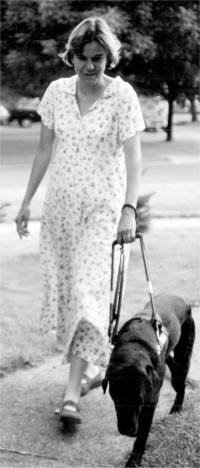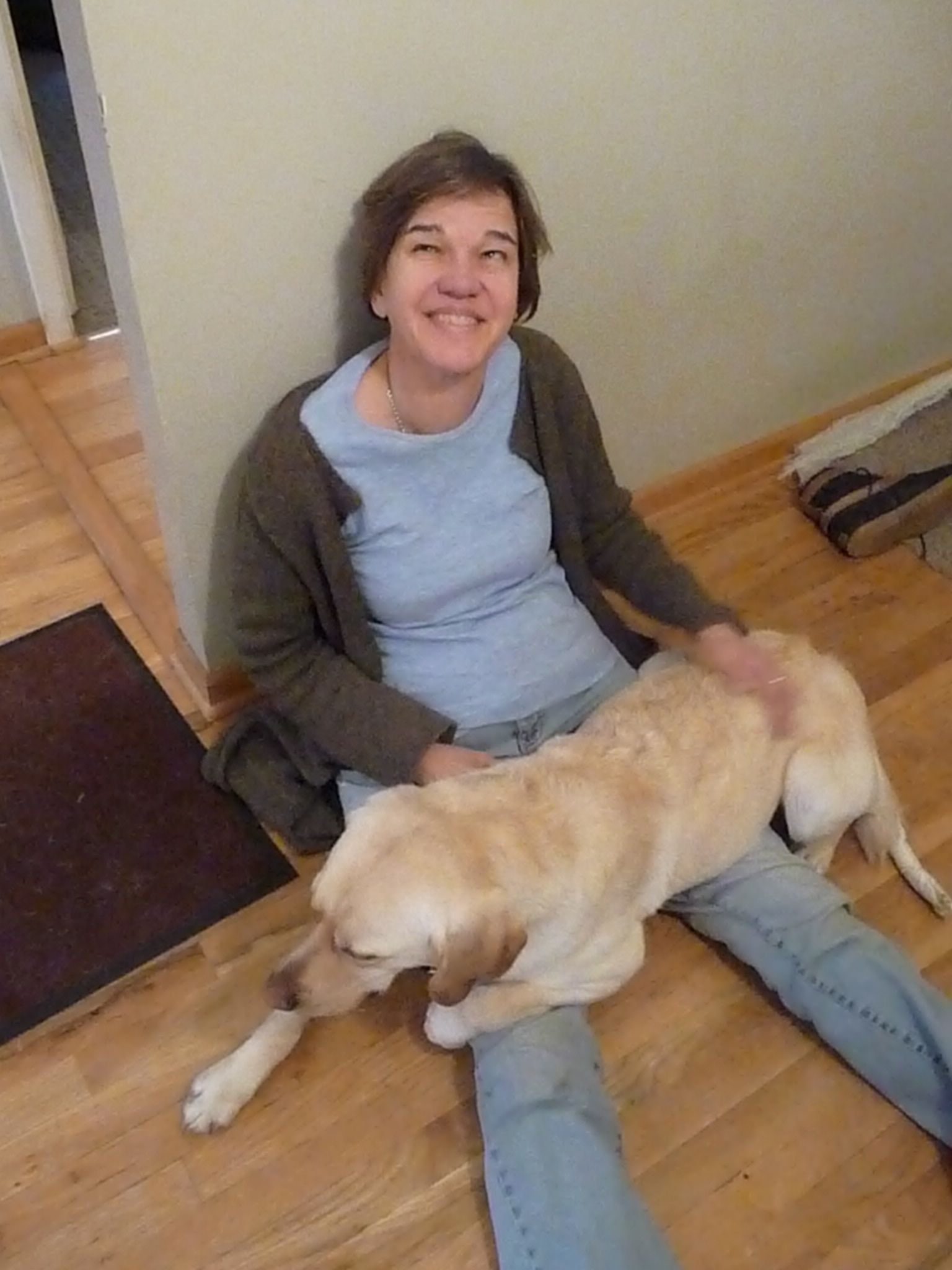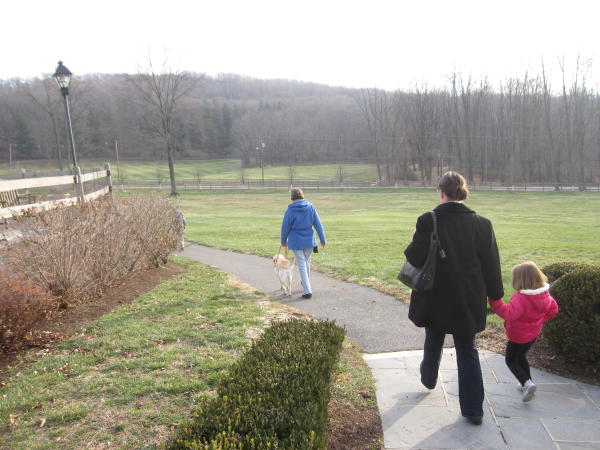An ice bag, a cup of bouillon, lots of love and we're fine
December 25, 2010 • 13 Comments • Posted in Beth Finke, blindness, Seeing Eye dogs, Uncategorized
That's me and my first Seeing Eye dog, Pandora. If you look closely you'll see the leash looped around my wrist.
I fell. Outside. With Harper. Last night. My feet slipped out from under me.
Hello, sidewalk. Meet the back of my head. Thud.
First thought: Am I conscious?
Second thought:Where’s Harper?
*****
In addition to holding a harness, Seeing Eye dog users also attach a leash to our dogs, then loop the other end around our wrists. The leash is necessary for giving our dogs corrections — this snippet from the “Control and Discipline” lecture I heard while training with Harper a few weeks back:
Some dogs, like some humans, will allow themselves to be temporarily distracted by things which seem interesting to them but are not desirable when it comes to walking or getting through traffic. During training we attempt to educate your dog to control these instincts, but it is virtually impossible to eliminate them.
Some instincts are helpful in relation to guide work. Examples:
- the homing instinct. Harper is very good at retracing his steps and finding known destinations, like the door to our apartment building.
- the pack instinct. This instills Harper’s desire to please the master, in this case …me!
Unfortunately, most dog instincts are detrimental to good guide work. Trainers at the Seeing Eye drummed it into us that we have to work very, very hard to control our dogs desire to chase, scavenge, sniff, protect, and socialize. Back to the lecture notes:
If the distraction is unusually interesting, it may be necessary to accompany the verbal reprimand with a more effective means of regaining the dog’s attention. In such instances, following the reprimand with a jerk on the leash will draw the dog’s attention away from the distracting influence and bring it back to the work at hand. The strength of the leash correction depends upon the type of distraction, as well as your own strength, and the nature of your individual dog.
I’ve appreciated having that leash at hand in order to correct Harper some since we got home (Harper is very interested in some of the other dogs in our neighborhood!) but the leash did another, far more important, job for the two of us last night.
I’d fallen on a sidewalk that edges Harrison, a very, very busy street. After getting my head together, I felt for the leash. There it was, looped around my wrist. Just the way Seeing Eye trainers taught us. And there was Harper, wagging his tail at the other end.
“Harper, come!” He came right to my side. I lay there a long while, petting Harper, devising a way to get horizontal again.
When I finally stood up, a man called out in a beautiful Jamaican accent from across the street. “Ma’am. You oh kay?”I was near tears, but managed to hold them back long enough to answer. My head hurt, but I was all right. And so was Harper. “We’re only a half-block from home,” I told him. Somehow, having a complete stranger worry about me on Christmas Eve like that gave me faith. I knew we’d make it home.
*****
Thursday, the day before my fall, was my birthday. Friends and family mailed cards, bought me drinks, emailed notes, donated to causes in my name, shipped packages, left phone messages, wrote, sent and sang songs to remember my less-than-convenient birthday. Thank you, thank you, thank you. After all these many, many years, you continue making me feel it’s worthwhile picking myself up after a fall.



